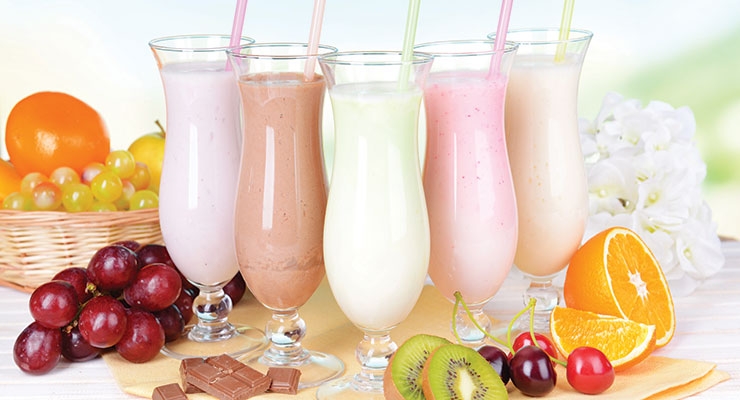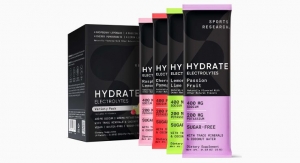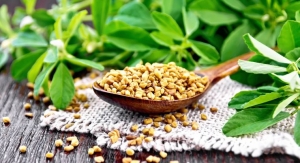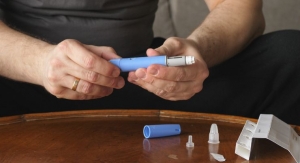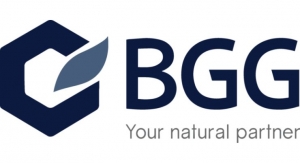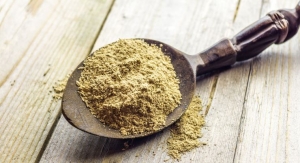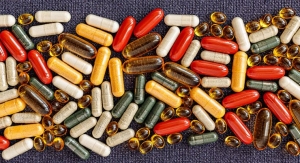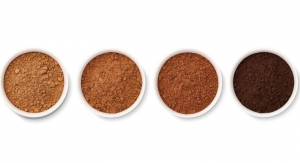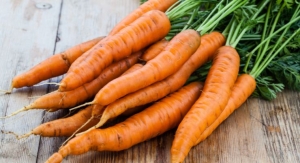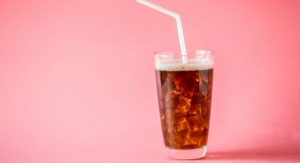Pete Maletto, President & Senior Scientist, PTM Food Consulting07.01.15
Items that were once staples of the American diet since the mid-twentieth century have become offensive, as knowledge improves about what is good for our bodies and what is not.
Consumers have learned that beverages can be healthy, functional and low in calories while still maintaining their thirst-quenching appeal. Sugary, high-calorie beverages continue to decline year after year, while naturally sweetened, lower calorie beverages report multiple digit increases. Consumer tastes have gone back to basics with few and natural ingredients and easy to understand labeling. But while they want more basic ingredients, consumers also look for more functional ones, including vitamins for obvious health benefits, herbs for mental well-being, amino acids for recovery, protein for weight management and even caffeine for energy.
In my business we develop all kinds of foods, food ingredients and beverage products for many brands, both new and established. Lately, more and more are catching on, and nearly all our clients understand the negatives of high sugar and artificial ingredients. Even more importantly, they want to develop beverages that have multiple functions, ingredients that can be felt and are healthy for the consumer. They don’t just know what they want, they know exactly what they want; these entrepreneurs are well versed in healthy and functional ingredients, thus educating their customer base. They are off to a good start, shaping their brands to have a healthful impact on the public while obtaining the point of difference they need to be a player in the industry.
The New Mentality
There are two lists that come to mind when formulating a new beverage: the in-demand ingredients that consumers want, and the list of ingredients that are feared and loathed. We’ve traded sugar for stevia and monkfruit, with evolutions of the two entering the market each year. The use of artificial colors isn’t even an option for our forward-thinking client base. Sometimes natural just isn’t enough; non-GMO, organic, vegan and gluten-free are highly sought after certifications in our formulation work. We see demand for these characteristics continue to grow as the knowledge and understanding of the consumer improve. How refreshing it is that this mentality is fueling the future of the food and beverage industry.
Have An Idea?
The most important aspect of developing your idea for a food or beverage is knowing your customer base, including what they want and what they understand. Additionally, is your product disruptive enough to make an impact and sell? More importantly, is your branding sustainable, and is your product good enough to become a constant need?
The most successful brands on the shelf at your local Whole Foods typically aren’t like every other product beside them, but they’re also not so wildly different that they are misunderstood. The most successful products are ones that have established a point of difference at an opportune time. It’s the idea of capitalizing on an ingredient or segment when it’s trending upward and developing a product that disrupts that market—essentially, finding a consumer need or a gap that your product can fill.
Protein Based
One of those gaps was a ready-to-drink protein shake that is just as much of a food as it is a beverage. Formulated for bodybuilders many years ago, protein shakes have become a regular staple in the everyday diet. Today’s protein shakes are even getting approval from Millennial moms on any one of their many blogs and forum posts. Being the most nutrient dense of any beverage, there is nothing better for your health than a protein shake. And many may contain healthy fats, vitamins, minerals and amino acids all in one easy-to-drink container.
It’s been a long road from when protein shakes were just the thing for a bodybuilder, to today, where they are the grab-and-go option for meal replacement. Protein shakes have lost that greased up bodybuilder stigma and are showing their softer, more natural side, appealing to a wide range of consumers with shakes for weight loss, weight gain and every other need in between.
I had the thrill of developing many of the first protein drinks nearly 20 years ago. Back then sales were just a blip of what they are now, and I’ve seen the progression to the mainstream consumer. Today, consuming a protein drink is as common as drinking a Pepsi was some years ago. The new age of protein products preparing for roll out are naturally sweetened, low in sugar and high in nutrients with sweetness innovations we have been perfecting for more than 10 years.
Evolving protein sources like nuts, plants and dairy have created an ever-growing market flooded with innovation that we are attempting to lead. By offering variations of flavors, protein sources and calories, there seems to be a brand to fit a diverse group of lifestyles.
Eliminating Sugar
I truly believe that sugar has become the new evil in the food and beverage industry. The low carb rise of the early 2000s, led by Dr. Robert Atkins, is primarily responsible for today’s awareness. No, it wasn’t the cholesterol in your morning eggs clogging your arteries, it was sugar that brought on the tidal wave of insulin that increased fat storage and caused advanced cardiovascular disease—and Dr. Atkins proved it. His legacy has been forever marked as the man who forced an evolution in the food industry. So as we fast-forward 15 years later, we have Paleo, Caveman and Ketogenic diets, all recycling what Dr. Atkins taught—which is to get rid of the sugar and excess carbs and you will look better and live longer.
At the lab, some of our biggest innovations include reducing sugar, retaining mouth feel in sugar-free food and beverage products, and lately, developing all-natural products. Using artificial sweeteners is always the easy route when formulating with zero sugar. However, achieving this naturally is one of the many areas we take pride in with our innovations.
Stevia has come a long way from just three years ago; the bitter tail that consumers complain about is now almost gone. Many versions are now present, including some stevia as high as 99% Reb A, others as hydrolyzed or enzymatically processed to isolate the sweet note and eliminate the off notes. With our masking technology we have the opportunity to create beverages with stevia that no longer have that licorice tail that alienated consumers a few years back.
Another noteworthy natural sweetener is monk fruit (otherwise known as lo han) that comes with its handicap, but when used synergistically with stevia can produce some remarkable results. We have been working for nearly a decade on taste bud depolarization utilizing natural flavors that unlock sweet taste-bud receptors and creating a magnification of the sweeteners used. We can make 5 grams of sugar taste like 15 grams, and lately we can make stevia and monk fruit taste as natural as 20 grams of sugar, with a sucrose mock and organoleptic properties that rival the real thing.
The new kid on the block is one we have been waiting for, and that superstar is allulose. Marketed by Tate and Lyle as Dolcia Prima, this is the one ingredient we were missing from low-sugar formulations that needed sugar solids to taste and perform like a real sugar laden food. Allulose is not metabolized so it has a much lower caloric value, but unlike a sugar alcohol it does not cause stomach distress and side effects of those other non-caloric bulk sweeteners used in sugar-free food formulations. So think of it this way: a chocolate bar with allulose that tastes exactly like a Godiva bar with full sugar, or ice cream with allulose, but with the creamy density of Edy’s Grand. The future for low-sugar formulations is super exciting and soon technology like allulose will change the beverage world.
Old Standbys, New Concepts
If you’ve been down the water aisle in your grocery store then you can no doubt see the influx of coconut water. While coconut water’s success proves it’s more than just a passing trend, we don’t yet know how the newest fleet of alternative waters will fair. Maple, cactus, aloe, artichoke and bamboo are just a few waters that are all trying to make a splash in the beverage market. Natural teas and coffee in cold brew form continue growing at a promising rate and show no signs of weakening demand.
So when consumers want a healthy beverage, what exactly do they want? Well, we know what they don’t want: high amounts of sugar, artificial sweeteners, artificial colors and unnecessary calories. Healthy beverage options should offer premium hydration, recovery and life extension benefits, all while translating easily to the consumer. We are glad to be leading the way in the food and beverage development business and be a fundamental part of cleaning up our food supply for better tasting, healthy choices that will impact all of our lives.
Pete Maletto is president and senior scientist at PTM Food Consulting, Point Pleasant, NJ. He has more than 20 years of experience formulating healthy and functional foods and beverages. For more information: info@ptmfood.com; www.ptmfood.com
Consumers have learned that beverages can be healthy, functional and low in calories while still maintaining their thirst-quenching appeal. Sugary, high-calorie beverages continue to decline year after year, while naturally sweetened, lower calorie beverages report multiple digit increases. Consumer tastes have gone back to basics with few and natural ingredients and easy to understand labeling. But while they want more basic ingredients, consumers also look for more functional ones, including vitamins for obvious health benefits, herbs for mental well-being, amino acids for recovery, protein for weight management and even caffeine for energy.
In my business we develop all kinds of foods, food ingredients and beverage products for many brands, both new and established. Lately, more and more are catching on, and nearly all our clients understand the negatives of high sugar and artificial ingredients. Even more importantly, they want to develop beverages that have multiple functions, ingredients that can be felt and are healthy for the consumer. They don’t just know what they want, they know exactly what they want; these entrepreneurs are well versed in healthy and functional ingredients, thus educating their customer base. They are off to a good start, shaping their brands to have a healthful impact on the public while obtaining the point of difference they need to be a player in the industry.
The New Mentality
There are two lists that come to mind when formulating a new beverage: the in-demand ingredients that consumers want, and the list of ingredients that are feared and loathed. We’ve traded sugar for stevia and monkfruit, with evolutions of the two entering the market each year. The use of artificial colors isn’t even an option for our forward-thinking client base. Sometimes natural just isn’t enough; non-GMO, organic, vegan and gluten-free are highly sought after certifications in our formulation work. We see demand for these characteristics continue to grow as the knowledge and understanding of the consumer improve. How refreshing it is that this mentality is fueling the future of the food and beverage industry.
Have An Idea?
The most important aspect of developing your idea for a food or beverage is knowing your customer base, including what they want and what they understand. Additionally, is your product disruptive enough to make an impact and sell? More importantly, is your branding sustainable, and is your product good enough to become a constant need?
The most successful brands on the shelf at your local Whole Foods typically aren’t like every other product beside them, but they’re also not so wildly different that they are misunderstood. The most successful products are ones that have established a point of difference at an opportune time. It’s the idea of capitalizing on an ingredient or segment when it’s trending upward and developing a product that disrupts that market—essentially, finding a consumer need or a gap that your product can fill.
Protein Based
One of those gaps was a ready-to-drink protein shake that is just as much of a food as it is a beverage. Formulated for bodybuilders many years ago, protein shakes have become a regular staple in the everyday diet. Today’s protein shakes are even getting approval from Millennial moms on any one of their many blogs and forum posts. Being the most nutrient dense of any beverage, there is nothing better for your health than a protein shake. And many may contain healthy fats, vitamins, minerals and amino acids all in one easy-to-drink container.
It’s been a long road from when protein shakes were just the thing for a bodybuilder, to today, where they are the grab-and-go option for meal replacement. Protein shakes have lost that greased up bodybuilder stigma and are showing their softer, more natural side, appealing to a wide range of consumers with shakes for weight loss, weight gain and every other need in between.
I had the thrill of developing many of the first protein drinks nearly 20 years ago. Back then sales were just a blip of what they are now, and I’ve seen the progression to the mainstream consumer. Today, consuming a protein drink is as common as drinking a Pepsi was some years ago. The new age of protein products preparing for roll out are naturally sweetened, low in sugar and high in nutrients with sweetness innovations we have been perfecting for more than 10 years.
Evolving protein sources like nuts, plants and dairy have created an ever-growing market flooded with innovation that we are attempting to lead. By offering variations of flavors, protein sources and calories, there seems to be a brand to fit a diverse group of lifestyles.
Eliminating Sugar
I truly believe that sugar has become the new evil in the food and beverage industry. The low carb rise of the early 2000s, led by Dr. Robert Atkins, is primarily responsible for today’s awareness. No, it wasn’t the cholesterol in your morning eggs clogging your arteries, it was sugar that brought on the tidal wave of insulin that increased fat storage and caused advanced cardiovascular disease—and Dr. Atkins proved it. His legacy has been forever marked as the man who forced an evolution in the food industry. So as we fast-forward 15 years later, we have Paleo, Caveman and Ketogenic diets, all recycling what Dr. Atkins taught—which is to get rid of the sugar and excess carbs and you will look better and live longer.
At the lab, some of our biggest innovations include reducing sugar, retaining mouth feel in sugar-free food and beverage products, and lately, developing all-natural products. Using artificial sweeteners is always the easy route when formulating with zero sugar. However, achieving this naturally is one of the many areas we take pride in with our innovations.
Stevia has come a long way from just three years ago; the bitter tail that consumers complain about is now almost gone. Many versions are now present, including some stevia as high as 99% Reb A, others as hydrolyzed or enzymatically processed to isolate the sweet note and eliminate the off notes. With our masking technology we have the opportunity to create beverages with stevia that no longer have that licorice tail that alienated consumers a few years back.
Another noteworthy natural sweetener is monk fruit (otherwise known as lo han) that comes with its handicap, but when used synergistically with stevia can produce some remarkable results. We have been working for nearly a decade on taste bud depolarization utilizing natural flavors that unlock sweet taste-bud receptors and creating a magnification of the sweeteners used. We can make 5 grams of sugar taste like 15 grams, and lately we can make stevia and monk fruit taste as natural as 20 grams of sugar, with a sucrose mock and organoleptic properties that rival the real thing.
The new kid on the block is one we have been waiting for, and that superstar is allulose. Marketed by Tate and Lyle as Dolcia Prima, this is the one ingredient we were missing from low-sugar formulations that needed sugar solids to taste and perform like a real sugar laden food. Allulose is not metabolized so it has a much lower caloric value, but unlike a sugar alcohol it does not cause stomach distress and side effects of those other non-caloric bulk sweeteners used in sugar-free food formulations. So think of it this way: a chocolate bar with allulose that tastes exactly like a Godiva bar with full sugar, or ice cream with allulose, but with the creamy density of Edy’s Grand. The future for low-sugar formulations is super exciting and soon technology like allulose will change the beverage world.
Old Standbys, New Concepts
If you’ve been down the water aisle in your grocery store then you can no doubt see the influx of coconut water. While coconut water’s success proves it’s more than just a passing trend, we don’t yet know how the newest fleet of alternative waters will fair. Maple, cactus, aloe, artichoke and bamboo are just a few waters that are all trying to make a splash in the beverage market. Natural teas and coffee in cold brew form continue growing at a promising rate and show no signs of weakening demand.
So when consumers want a healthy beverage, what exactly do they want? Well, we know what they don’t want: high amounts of sugar, artificial sweeteners, artificial colors and unnecessary calories. Healthy beverage options should offer premium hydration, recovery and life extension benefits, all while translating easily to the consumer. We are glad to be leading the way in the food and beverage development business and be a fundamental part of cleaning up our food supply for better tasting, healthy choices that will impact all of our lives.
Pete Maletto is president and senior scientist at PTM Food Consulting, Point Pleasant, NJ. He has more than 20 years of experience formulating healthy and functional foods and beverages. For more information: info@ptmfood.com; www.ptmfood.com

